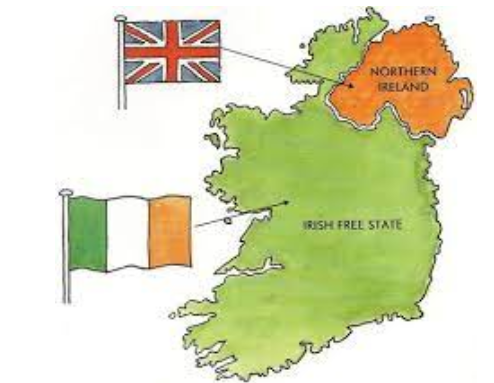
Is it a small island with two separate countries? Yes, but this is a much deeper topic. Today, we will discuss some of the fundamental differences between Ireland and Northern Ireland, along with a bit of history!
Two Countries
The fact that Ireland and Northern Ireland exist as two entirely separate countries on the same island is the basic difference you need to know. We will provide more detailed information on how this happened shortly, but essentially, Ireland, which was officially governed by Britain for over a century, gained independence from the United Kingdom in 1922.
Due to religious, cultural, and trade ties, Northern Ireland rejoined the United Kingdom, leading to the emergence of the Republic of Ireland as a free state consisting of 26 counties. This situation continues to this day.
Government: President and King
Another significant difference between Ireland and Northern Ireland is that they each have different heads of state. While both hold some authority, they are primarily symbolic. The head of state for Ireland is the President of the Republic of Ireland (currently Michael D. Higgins), while the head of state for Northern Ireland is Charles III. However, the day-to-day administration in both countries is carried out by their own prime ministers (known as Taoiseach in Ireland).
Currencies: Euro and Pound
Ireland uses the Euro (EUR) and has been using it since January 1999, after spending much of the 20th century with the Irish Pound.
Like other countries in the United Kingdom, Northern Ireland uses the Pound Sterling (GBP).
In an era where many transactions are made cashless today, it can be helpful to always have some cash on hand while traveling.
Different Capitals: Dublin and Belfast
Another notable difference between Northern Ireland and Ireland is that each has its own official capital city.
With a population of 1,173,179, Dublin is the capital of Ireland and the largest city in the country. Dublin is also where Ireland's national parliament (Oireachtas) is located, at Leinster House.
The largest city in Northern Ireland is Belfast, which is also the second-largest city on the island, with a population of 483,418. Belfast is home to Northern Ireland's local government and the power-sharing assembly (Stormont).
Languages: Irish and English
English is the commonly used language in both Ireland and Northern Ireland. However, the Republic of Ireland has two official languages: Irish and English. Until 2022, Northern Ireland only had English as its official language. However, the "Identity and Language Law" was passed, granting official status to Irish in Northern Ireland. Irish can now be used in courts, and an Irish commissioner has been appointed.
Traffic Signs
Another difference between Northern Ireland and Ireland is the traffic signs. When you cross the border into Ireland, the scenery may not change significantly at first glance, but the traffic signs do.
You will notice that all traffic signs in Ireland are bilingual, featuring both Irish and English.
Place names in English are written entirely in capital letters, while their Irish counterparts are written in a characteristic slanted variant (appearing italicized).
All traffic signs are written in the format you see on the mainland of Great Britain, and are entirely in English. Additionally, you will see that speed limits are measured in kilometers per hour in Ireland and in miles per hour in Northern Ireland.
Counties
Finally, one of the differences between Northern Ireland and the Republic of Ireland is the counties. There are a total of 32 counties in Ireland, of which 6 are in Northern Ireland (Antrim, Armagh, Tyrone, Fermanagh, Down, and Derry).
The remaining 26 (Donegal, Galway, Kerry, Cork, Clare, Wicklow, Mayo, Sligo, Waterford, Dublin, Meath, Louth, Wexford, Limerick, Kilkenny, Westmeath, Leitrim, Cavan, Tipperary, Kildare, Longford, Laois, Monaghan, Offaly, Roscommon, and Carlow) are within the Republic of Ireland.






